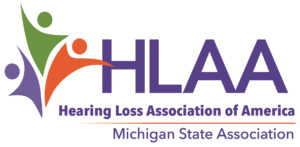By Ann Liming, Hearing Technology Resource Specialist
Those of us who wear hearing aids know the importance of hearing aid batteries to the functioning of our aids. Without battery power we simply are not able to hear through our hearing aids. We often take batteries for granted until we hear the annoying beeping sound in our ear signaling that the battery power is low. This often happens at inconvenient times and we may find ourselves without fresh batteries in important listening situations. And, how many times have we gone to the store to purchase a new pack of batteries and been uncertain of the size we need? These are nuisances to be sure but there are ways to prevent them from happening.
It is generally recommended that we change a hearing aid battery as soon as we hear beeps or when sounds become distorted or we have to turn up the volume more than usual. If we wear binaural hearing aids, some audiologist recommend we change both batteries at the same time to save having to stop in the middle of an activity to change the second battery a short time later. Because hearing aid batteries often lose power suddenly, it is good practice to carry extra batteries with us at all times. They can be carried in a pocket, a purse or in a keychain caddy.
The most common type of batteries on the market today are the zinc-air batteries. These batteries are air-activated. They come from the factory with a sealed sticker on the back of the battery which allows them to remain inactive until the sticker is removed. Once the seal is peeled off, oxygen in the air interacts with the zinc in the battery to “turn it on.” The battery cannot be deactivated by replacing the sticker. Recently, an 8th grader, Ethan Manuell, from Rochester, Minnesota, discovered that the life of a zinc-air battery was extended 80% by waiting 5 minutes between removing the sticker from the battery and placing the battery in the hearing aid. Zinc-air batteries remain stable up to three years stored in a dry environment at room temperature. Storing zinc-air batteries in the refrigerator isn’t recommended as water particles can actually form under the sticker activating the battery.
Hearing aid batteries come in five different sizes and each size is color coded so if you cannot  remember the number of your battery, try remembering the color of the sticker on the battery. Larger hearing aids that typically have more features or are needed for someone with severe or profound hearing loss will typically require a larger battery. Based on a 16 hour per day use cycle, hearing aid batteries may last from 5 to 14 days depending on the size of the battery and power needed by the aid.
remember the number of your battery, try remembering the color of the sticker on the battery. Larger hearing aids that typically have more features or are needed for someone with severe or profound hearing loss will typically require a larger battery. Based on a 16 hour per day use cycle, hearing aid batteries may last from 5 to 14 days depending on the size of the battery and power needed by the aid.
To minimize battery drain and prevent moisture buildup, open the door of the battery compartment when the aid is not in use. Remove the battery entirely if you will not be using the hearing aid for some time. Protect backup batteries from discharging by storing them away from coins, keys and other metal objects.
Rechargeable batteries have been available for some time but the pros often have not outweighed the cons. Rechargeable batteries can be less costly over time, there is decrease battery disposal resulting in less acids and chemicals leaking into the earth of a landfill and, the user has control over how long the batteries will last and when they will have to be changed.
On the negative side, small hearing aid battery sizes may be difficult for some people to handle and to fit into a charger, batteries have to be charged every day, the charge may last only eight to twelve hours and, the user needs to have more than one pair of batteries.
A new rechargeable battery, ZPower – scheduled to come out this year, advertises that the battery lasts up to a year and when charged has “all day power.” In some cases batteries have been reported to last longer than 24 hours, even with wireless streaming through the hearing aid. If a user forgets to recharge the battery, the hearing aid will still work with a zinc air battery. The hearing aid is placed in a “charging cradle” and the user never has to open the battery door on the aids. This ZPower rechargeable system is said to be compatible with most popular hearing aids and is offered exclusively through qualified hearing specialist. http://www.hearingreview.com/2015/07/new-door-rechargeable-hearing-aid-battery-solutions/




